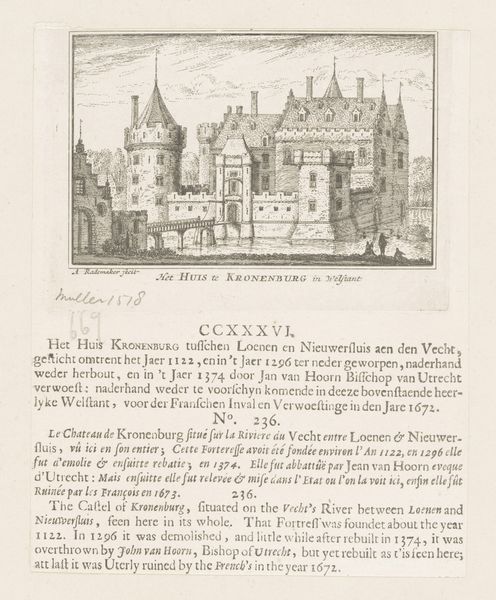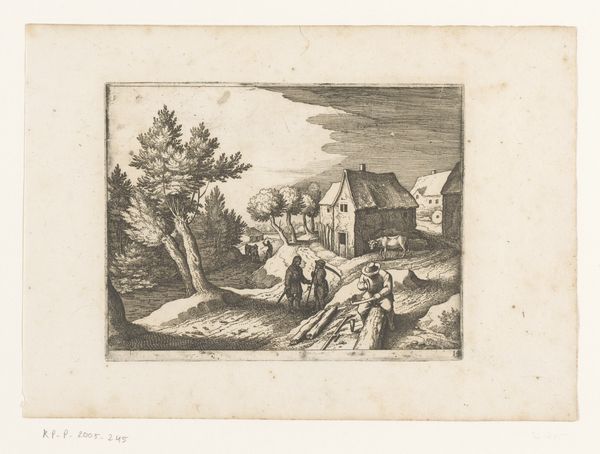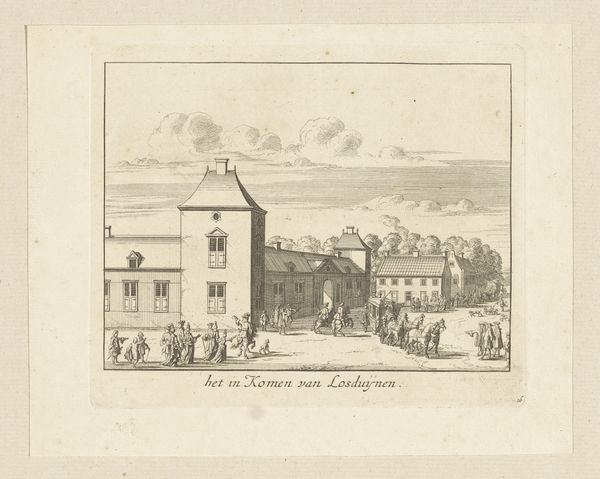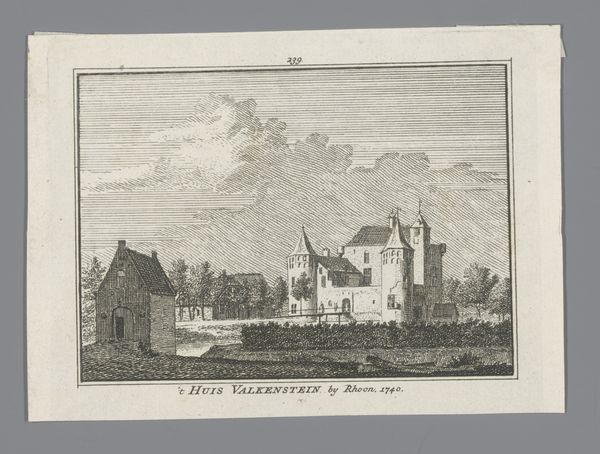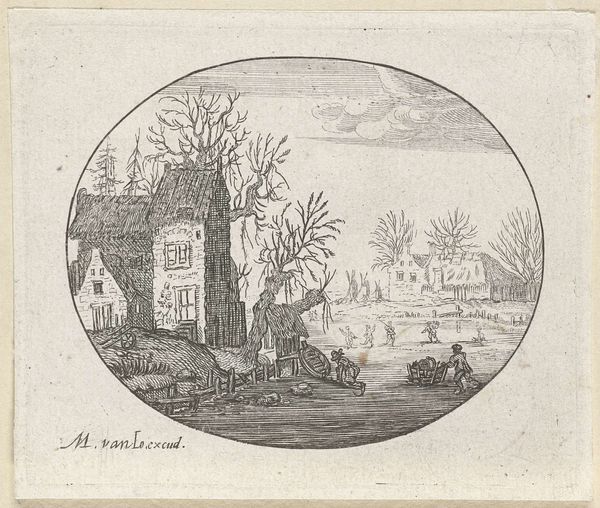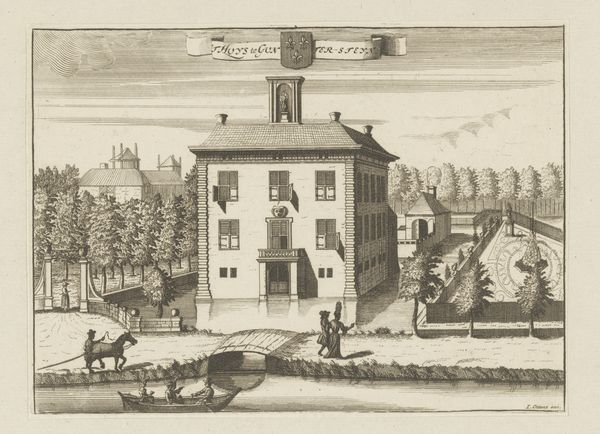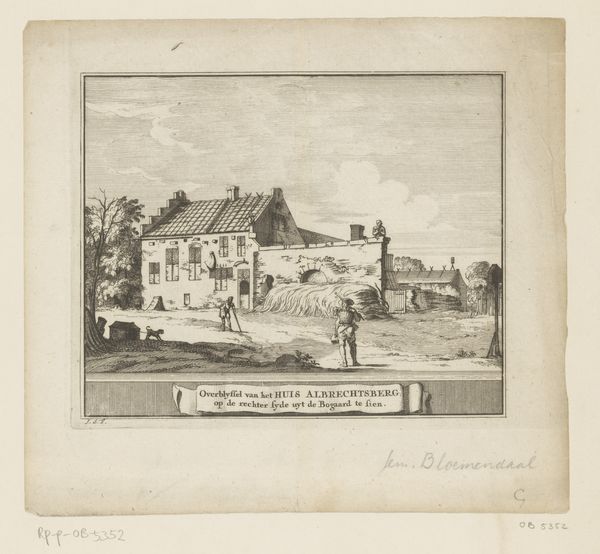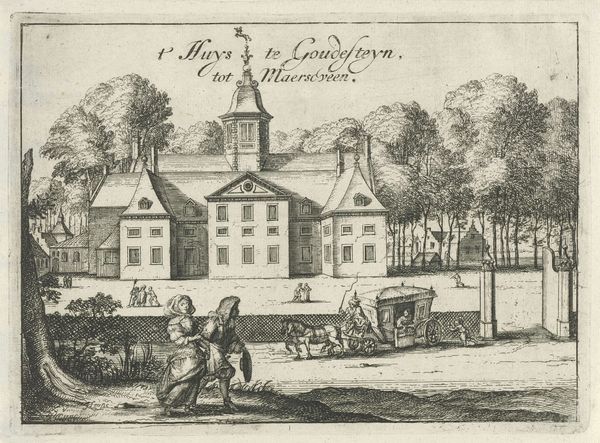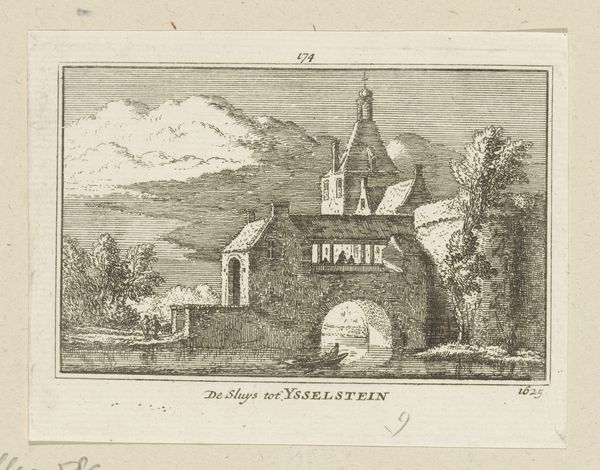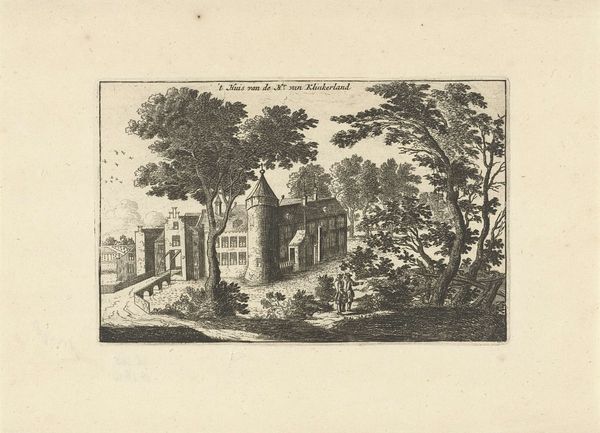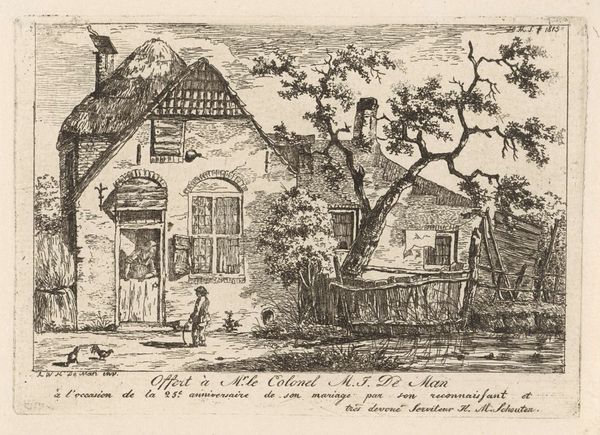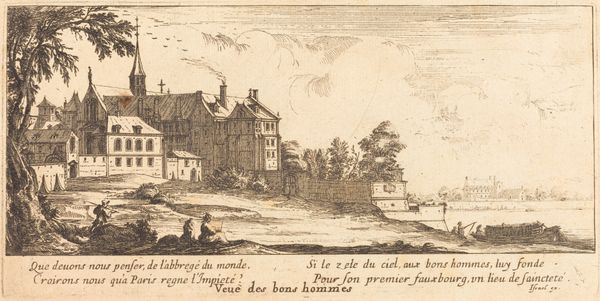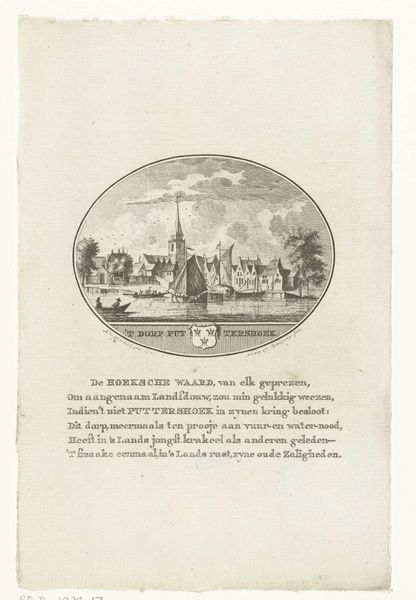
print, paper, engraving, architecture
#
baroque
#
dutch-golden-age
# print
#
landscape
#
paper
#
line
#
cityscape
#
engraving
#
architecture
#
realism
Dimensions: height 122 mm, width 130 mm
Copyright: Rijks Museum: Open Domain
Abraham Rademaker created this etching of Gezicht op Oud Berkenrode near Haarlem sometime between 1675 and 1735. The printmaking process begins with Rademaker incising lines into a metal plate, inking it, and pressing it onto paper, resulting in the image you see. The stark contrast of the ink on paper emphasizes the architectural details of the estate and the surrounding landscape. Rademaker's skilled handling of line creates a sense of depth and texture, inviting the viewer to appreciate the estate's grandeur. Printmaking, like the scene depicted, highlights the means of production, and the social context in which objects and artworks are created. The medium allows for the mass production of images, making art accessible to a wider audience beyond the wealthy elite. Printmaking democratizes art consumption and highlights the role of labor and class. Understanding the materials, making, and context challenges the traditional distinctions between fine art and craft, expanding our understanding of art history.
Comments
No comments
Be the first to comment and join the conversation on the ultimate creative platform.

